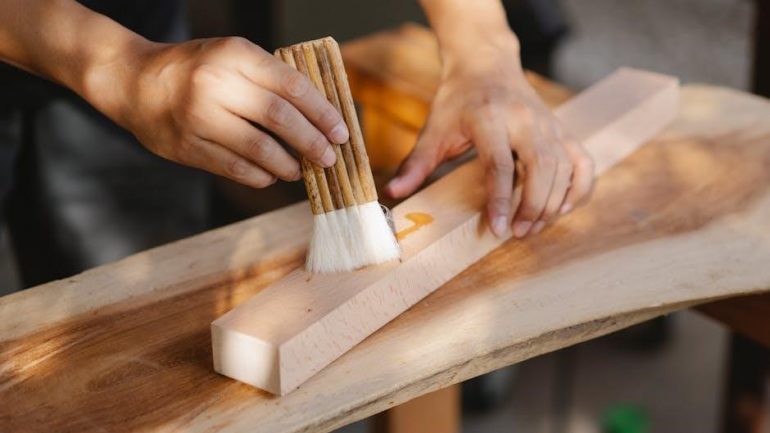Router Straight Edge Guide: An Article Plan
Embark on a woodworking journey by exploring the comprehensive world of router straight edge guides․ This article offers a structured plan, beginning with an introduction and delving into various types, benefits, materials for DIY builds, step-by-step instructions, and diverse applications beyond simple tasks․
In woodworking, achieving precise and straight cuts is paramount for creating professional-looking projects․ The router, a versatile power tool, can be used for various tasks, but it often requires assistance to ensure accuracy․ That’s where router straight edge guides come in․ These guides act as fences, allowing the router to move along a perfectly straight path, resulting in clean and accurate cuts․
Whether you’re a seasoned woodworker or a DIY enthusiast, understanding and utilizing router straight edge guides can significantly improve the quality of your work․ They are particularly useful for tasks such as cutting dados, rabbets, and grooves, as well as for edge-joining boards․ By providing a stable and consistent reference, these guides eliminate the guesswork and potential for error that can occur when routing freehand․
Router straight edge guides come in various forms, from commercially available options to shop-made jigs․ Regardless of the type, their primary function remains the same: to guide the router and ensure a straight, accurate cut․ In the following sections, we’ll explore the different types of router straight edge guides, their benefits, and how to build your own simple guide․
Types of Router Straight Edge Guides
Router straight edge guides come in various forms, each offering unique features and benefits for different woodworking needs․ One common type is the clamp-on straight edge, which typically consists of a rigid metal or aluminum bar with clamps that secure it to the workpiece․ These are readily available commercially and offer a quick and easy setup․
Another popular option is the shop-made straight edge, often constructed from plywood or MDF․ These can be customized to specific lengths and widths, allowing for greater flexibility in accommodating different project requirements․ Shop-made guides can be as simple as a straight piece of wood clamped to the workpiece or more elaborate jigs with adjustable fences and integrated clamping systems․
Universal edge guides that attach directly to the router’s base are also available․ These often feature adjustable fences and can be used for both straight and curved cuts․ For specialized tasks like cutting dadoes, dedicated dado jigs are available․ These jigs typically have a fixed width and guide the router along a precise path to create perfectly sized dadoes․
Finally, for large-scale routing tasks, consider using a long, straight board as a guide, clamping it securely to the workpiece․ The choice of straight edge guide depends on the specific project, budget, and desired level of precision․
Benefits of Using a Router Straight Edge Guide
Employing a router straight edge guide in woodworking projects offers a multitude of advantages, significantly enhancing precision, safety, and overall project quality․ Primarily, it ensures straight and accurate cuts, especially crucial when creating dados, rabbets, or performing edge-joining tasks․ This accuracy minimizes errors and reduces material waste, leading to cost savings․
Moreover, a straight edge guide enhances safety by providing a stable and controlled routing experience․ It prevents the router from veering off course, reducing the risk of kickback and potential injury․ The guide also allows for consistent cut depth and width, resulting in professional-looking results․
Router straight edge guides are versatile tools suitable for a wide range of applications beyond simple straight cuts․ They can be used for creating precise mortises, shaping edges, and even template routing․ Whether you’re a seasoned woodworker or a beginner, a straight edge guide simplifies complex tasks and improves the quality of your work․
Furthermore, using a straight edge guide can save time and effort compared to freehand routing․ The guide eliminates the need for constant adjustments and corrections, allowing you to focus on the task at hand․ The end result is a more efficient and enjoyable woodworking experience․
Materials for Building a DIY Router Straight Edge Guide
Constructing your own router straight edge guide offers a cost-effective and customizable solution for achieving precise cuts․ The primary material is a stable and flat piece of plywood or MDF, ensuring a reliable reference surface․ The dimensions depend on your typical project size, but a length of at least 48 inches is generally recommended for versatility․
For the guide rail, select a straight piece of hardwood or aluminum, providing a durable and low-friction surface for the router base to glide against․ Accurate measurement and precise cutting are crucial for ensuring the rail is perfectly straight․ You’ll also need fasteners like screws or bolts to securely attach the rail to the base, ensuring a rigid assembly․
Consider adding a non-slip material to the underside of the base to prevent movement during routing․ Rubber or foam padding can provide excellent grip on various work surfaces․ Clamps are essential for securing the guide to your workpiece, ensuring it remains firmly in place throughout the routing process․
Optional materials include a measuring tape, pencil, and square for accurate layout and marking․ A router bit with a known diameter is helpful for calibrating the guide․ With careful material selection and precise construction, you can create a router straight edge guide that meets your specific woodworking needs․
Step-by-Step Guide to Building a Simple Router Straight Edge Guide
Embark on creating your router companion with these detailed steps․ First, acquire a piece of plywood or MDF approximately 48 inches long and 8 inches wide․ Ensure its flatness and stability, forming the base․ Next, select a straight hardwood or aluminum piece for the guide rail, slightly longer than your typical cut length․
Accurately measure and cut the guide rail to your desired length․ Use a reliable square to position it perfectly perpendicular to one edge of the plywood base․ Securely attach the guide rail using screws or bolts, ensuring a rigid connection․ Countersink the screws to prevent interference with the router base․
Apply non-slip material like rubber or foam padding to the underside of the plywood base․ This prevents movement during routing, enhancing accuracy․ Calibrate the guide by measuring the distance from the router bit to the edge of the router base․ Adjust the guide rail position accordingly․
Test the guide on a scrap piece of wood, making a shallow cut․ Fine-tune the guide rail position if needed, ensuring straight and accurate cuts․ Secure the guide to your workpiece using clamps, keeping it firmly in place during routing․ With these steps, you’ll have a reliable router straight edge guide․
Using a Router Straight Edge Guide for Dadoes
Unlocking precision for dado cuts begins with securing your straight edge guide parallel to the desired dado location․ Employ clamps to firmly affix the guide, ensuring zero movement during routing․ Select a router bit matching your desired dado width․ A straight bit is ideal for clean, square-bottomed dadoes․
Set your router’s depth of cut according to the specifications of your project, avoiding excessive depth in a single pass․ Multiple shallow passes produce cleaner results, preventing tear-out and reducing strain on the router․ Position the router base against the straight edge guide, maintaining constant contact during the cut․
Move the router smoothly and steadily along the guide, letting the bit do the work․ Avoid forcing the router, which can lead to inaccuracies or damage․ For wider dadoes, make multiple passes, slightly overlapping each pass to achieve the desired width․
Inspect the completed dado, ensuring it’s square, consistent in depth, and free of imperfections․ A well-executed dado enhances joinery strength and aesthetic appeal․ With careful setup and controlled routing, your straight edge guide empowers you to create flawless dadoes every time․
Applications Beyond Dadoes: Rabbets, Mortises, and Edge-Joining
Beyond dadoes, the router straight edge guide shines in crafting rabbets, essential for joining edges seamlessly․ By adjusting the router bit and guide placement, you can create precise rabbets for cabinet backs or drawer bottoms․ Its accuracy ensures tight-fitting joints, enhancing structural integrity․
Mortises, the negative spaces for mortise-and-tenon joinery, benefit immensely from a straight edge guide․ Securely clamp the guide to define the mortise’s boundaries, and use a straight or spiral upcut bit to remove material in controlled passes․ This method yields clean, square mortises, vital for robust furniture construction․
Edge-joining, creating wider panels from narrower boards, becomes effortless with a straight edge guide․ Mill the edges of the boards straight and parallel, then use the guide to create a perfectly flush joint․ This technique is invaluable for crafting tabletops, doors, and other large surfaces․
The straight edge guide’s versatility extends to creating consistent grooves, bevels, and chamfers; Its adjustability and precision make it an indispensable tool for a wide range of woodworking tasks, ensuring accuracy and efficiency in every project․
Safety Precautions When Using a Router with a Straight Edge Guide
Prioritize safety when routing with a straight edge guide․ Always wear safety glasses to protect against flying debris․ Ear protection is crucial due to the router’s high noise level․ A dust mask or respirator prevents inhalation of fine particles, especially when working with treated wood․
Securely clamp the straight edge guide to the workpiece, ensuring it won’t shift during routing․ Use clamps that provide adequate pressure without damaging the wood․ Before starting the router, double-check the bit is securely fastened and the depth is correctly set․
Maintain a firm grip on the router with both hands, keeping fingers away from the bit’s path․ Feed the router smoothly and steadily, avoiding excessive force․ Never reach over or around the router while it’s running․
Be aware of the router’s cord and keep it clear of the cutting area․ Avoid routing in damp or wet conditions․ After routing, allow the bit to come to a complete stop before removing the router from the workpiece․ Unplug the router when changing bits or making adjustments․ Regularly inspect the router and straight edge guide for any signs of damage and address them promptly․


